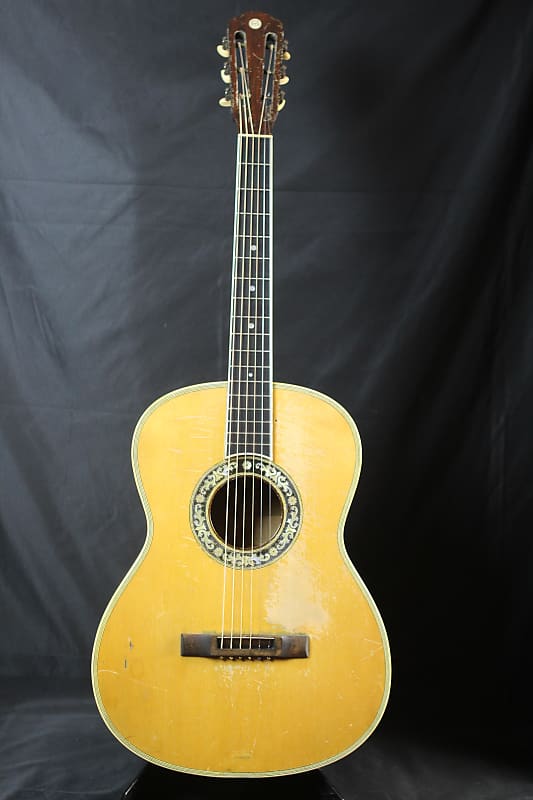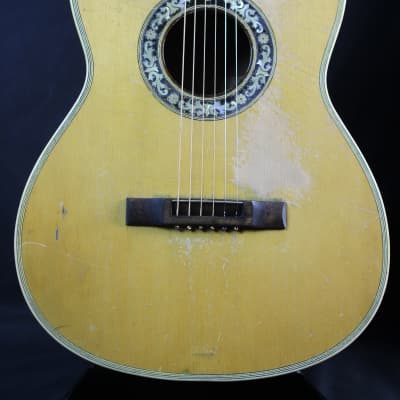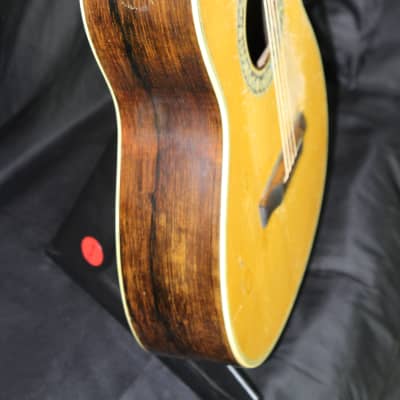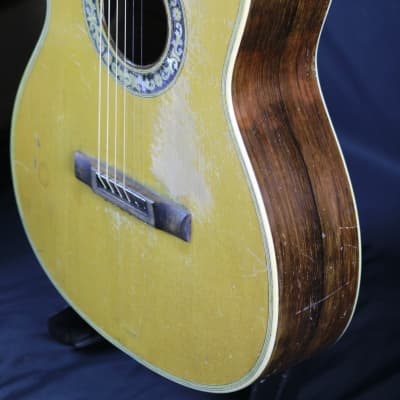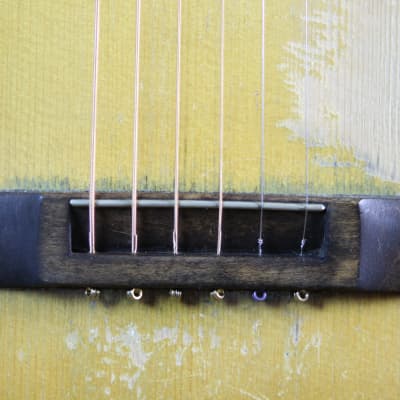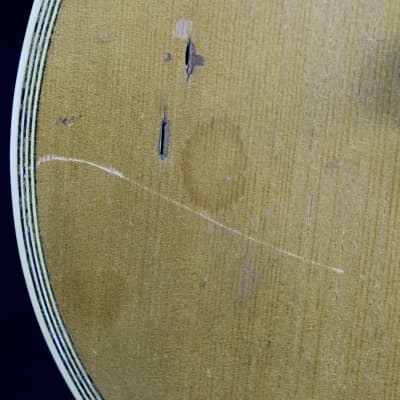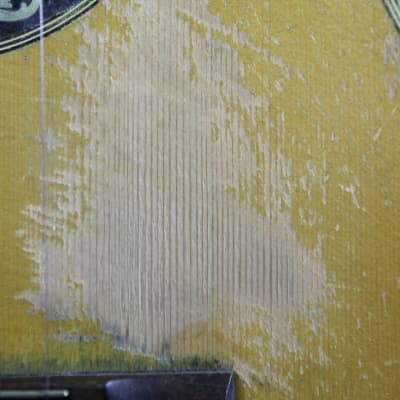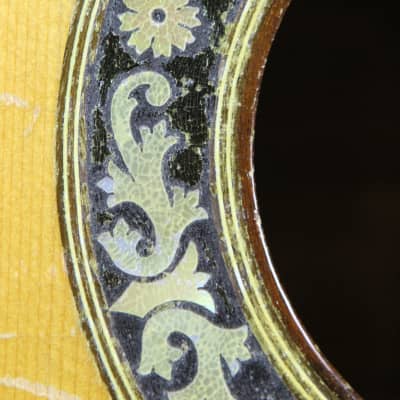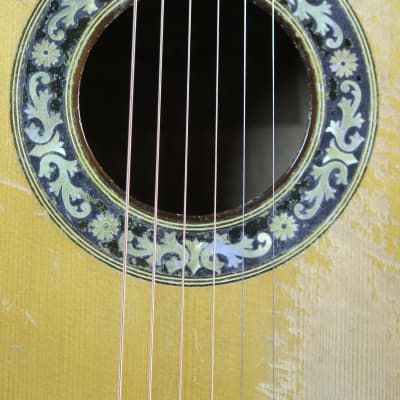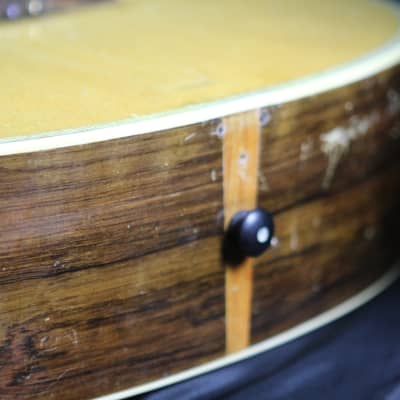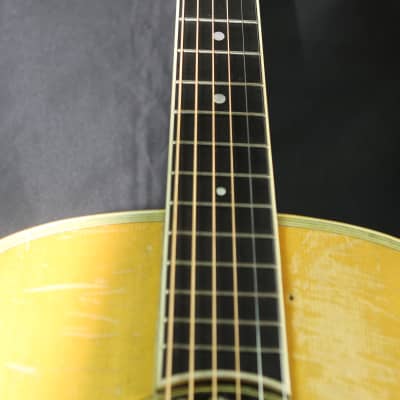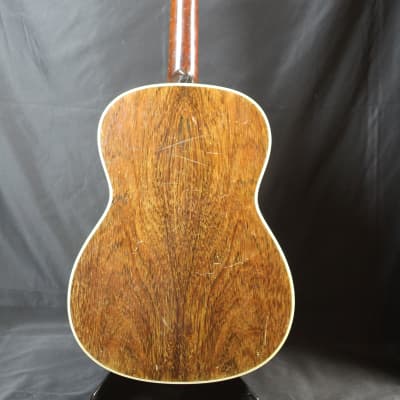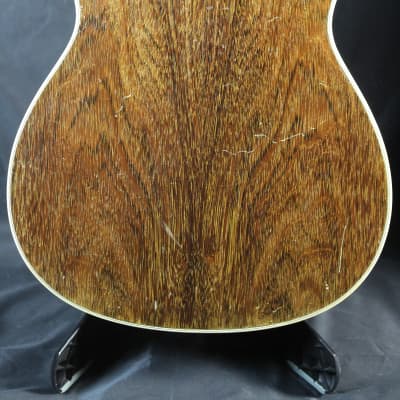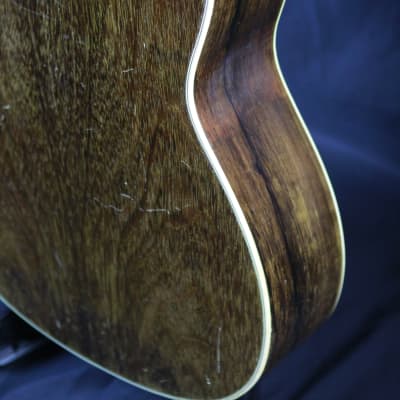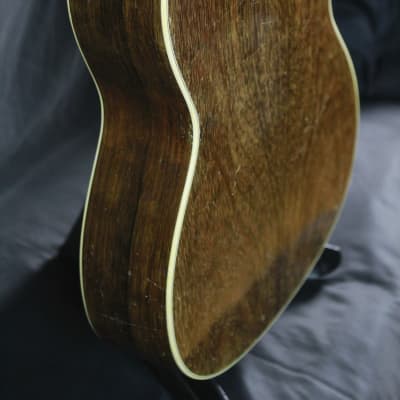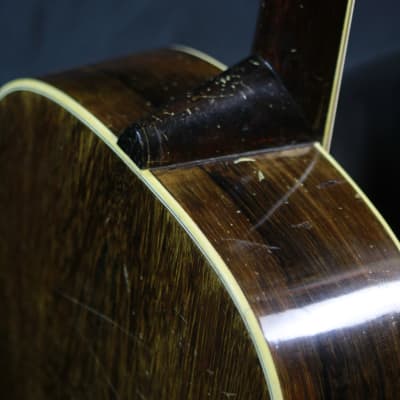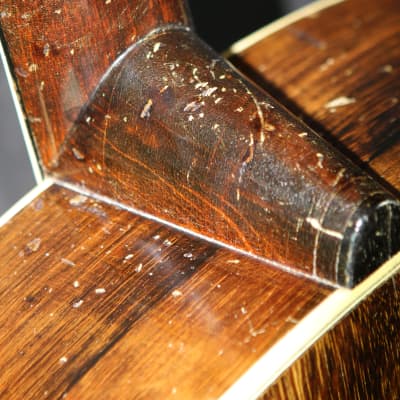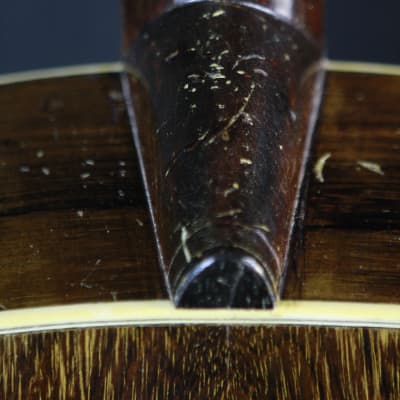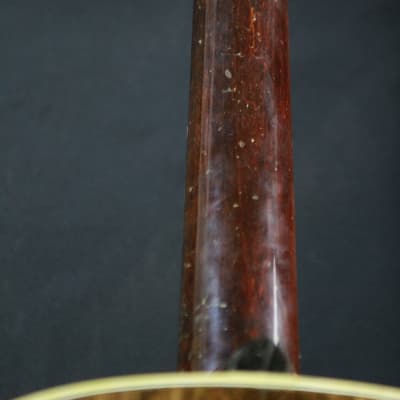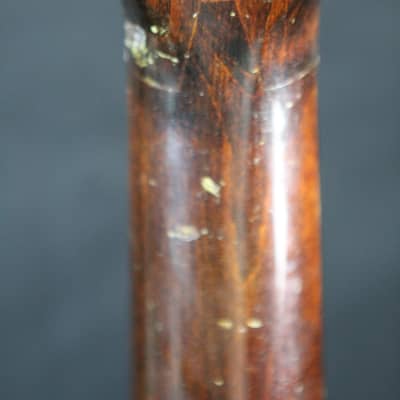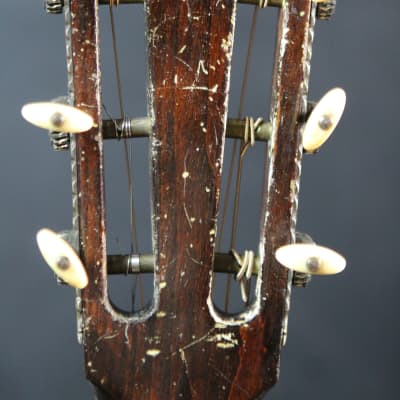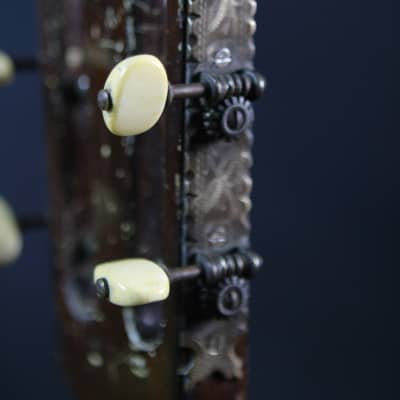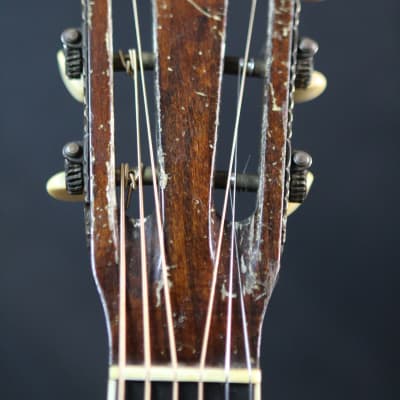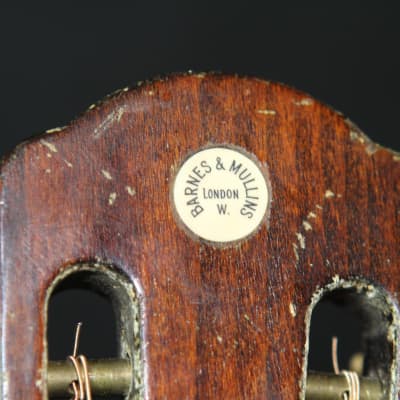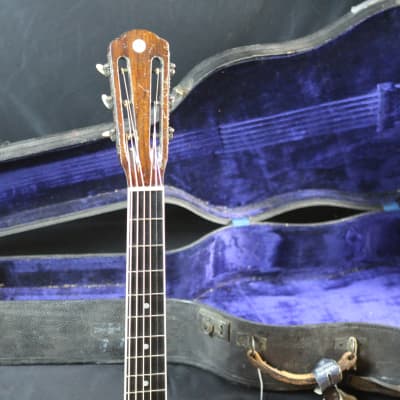The rather wordy label on the inside reads:
"Made in Germany from the dimensions and inventions of Arthur Froane, the great authority on the guitar for Barnes & Mullins London. This guitar has been tested and found correct. Please see that this label is signed."
Here is an extremely unusual, but very cool and playable guitar from the early 20th century. Barnes and Mullins was a large and well-known retailer and distributor in london. Their guitar production was always outsourced either domestically or to factories on contract in Spain or Germany and labeled Barnes and Mullins. This one was made in Germany and does show some German influence in the rosette, but the details of the design, which they attribute to Arthur Froane is decidedly English. Arthur Froane was a guitar teacher from the era who had a instruction book published. Whether he actually contributed to the design features, or they just used his name as an endorsement, there are many intriguing design elements on this guitar. The sharp v-shape joint at the end of the neck where the headstock attaches goes back to the Panormo design in the early 1800s in London. Also, the neck joint is at a steep angle where the neck meets the heel. A very unusual but well done design. The bridge design was also used on Panormo and other British guitars from the 19th century. Except that this one has a metal saddle to accommodate Steel strings. The Pearl Rosette and the eight layers of binding and the bound neck all point to a high-end model. The top is spruce, and the back and sides appear to be laminate Brazilian rosewood. This guitar can accommodate steel strings and is currently strung with light gauge bronze. The neck is straight when tuned to pitch. The action is fairly low at the nut raising to 5/32s of an inch at the 12th fret.
While it does have many design features from the 1800s listed above, this was also an exceedingly modern guitar for its time. With a lower bout at just over 15 in, this was a very large guitar in the 20s. Also it is braced heavier and the bridge plate is beefier to accommodate the newfangled steel strings. The neck joins the body at the 12th fret, and the guitar is very playable up to the 12th fret. It has a huge sound. The neck is a large but comfortable. The nut width is 1.7 inches and the neck is a large D shape. It fits right in the hand and is more manageable than a classical neck.
The tuning machines are all original and in excellent condition and work great. They are reminiscent of the Baker or Rance tuners made in the 1800s in England.
Cosmetically, this guitar shows plenty of playing wear. The top has heavy scratches from pick marks showing hours of play on this guitar. Maybe a professional player, but definitely an enthusiastic player. Besides the pick scratches on the top, there are small dings or small scratches at nearly every part of the guitar. None of these are damaging to the instrument, and none affect the playability or the feel. Except for the dings and scratches, this guitar is an excellent structural condition with no cracks or warps or anything that should prevent it from being a great instrument for another hundred years
It is exceedingly rare to find a guitar like this that has made it to America intact.
Comes with the original case with the British Airlines sticker from its trip over the pond.
